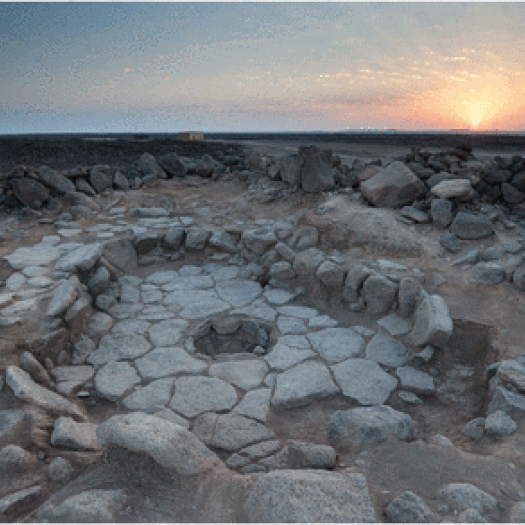Faire son pain

Figure 2. The site of Shubayqa 1 showing Structure 1 and one of the fireplaces (the oldest one) where the bread-like remains were discovered.


Figure 2. The site of Shubayqa 1 showing Structure 1 and one of the fireplaces (the oldest one) where the bread-like remains were discovered.
Le prochain séminaire d’archéobotanique de l’UMR AASPE aura lieu le 12 avril à 13h30 (heure de Paris) en 100% visioconférence. Il a pour thème « faire son pain ».
Le séminaire est ouvert à toutes et tous. Pour y assister, merci d’envoyer votre demande à salavert@mnhn.fr.
13h30-14h15 + 15 minutes de discussion : Cuire du pain dans un four « pompéien »: apports, limites et perspectives d’une expérimentation »/Baking bread in a « Pompeian » oven: contributions, limits and perspectives of an experiment ».
Nicolas Monteix (Maitre de conférences GRHis, Université de Rouen), en Français.
Depuis 2015, et à la suite d’études sur les boulangeries pompéiennes, un four à pain romain a été reconstruit « à l’identique » dans le domaine des Allobroges du Musée de Saint-Romain-en-Gal. Après une trentaine de cuissons, il convient de s’interroger sur les apports et les limites de la pratique expérimentale en archéologie dès lors qu’elle se fonde sur des éléments biologiques/ Since 2015, and following studies on Pompeian bakeries, a Roman bread oven has been rebuilt « à l’identique » in the Allobroges domain of the Museum of Saint-Romain-en-Gal (Rhône, France). After about thirty bread baking, it is necessary to wonder about the contributions and limits of experimental practice in archaeology when it is based on biological elements.
14h30-14h45 + 15 minutes de discussion : Bread making over time, an archaeological perspective
Amaia Arranz Otaegui (AASPE : MNHN-CNRS/University of Copenhagen), en anglais.
In this presentation we describe the three main lines of research on bread making that we are developing at present: the Natufian hunter-gatherer and Neolithic bread production and consumption practices in southwest Asia -developed within the current Marie Sklodowska-Curie project- and research on the panis quadratus from Pompeii -which brings together the available archaeological evidence from the site with traditional and ethnographic knowledge on bread-making in the Mediterranean area.

Figure 2. The site of Shubayqa 1 showing Structure 1 and one of the fireplaces (the oldest one) where the bread-like remains were discovered.